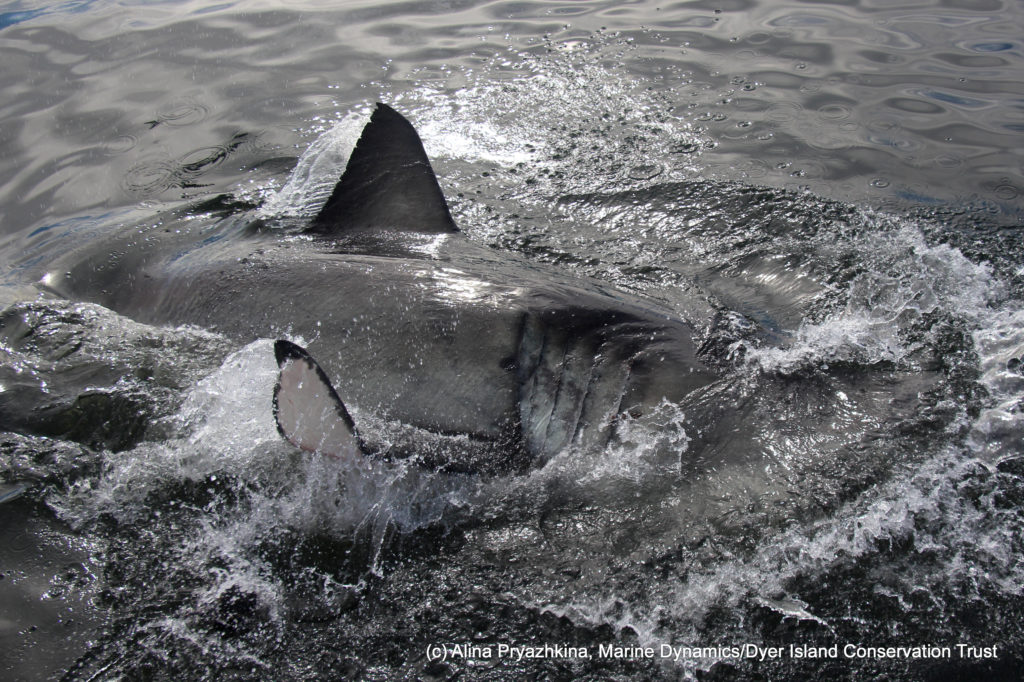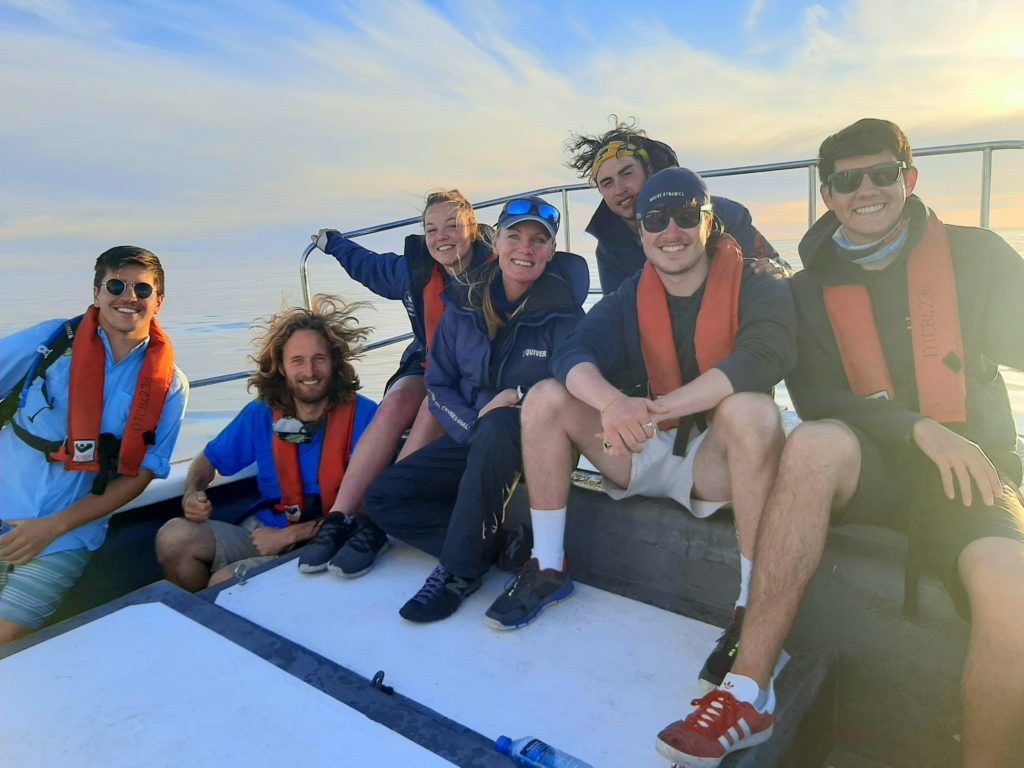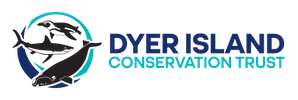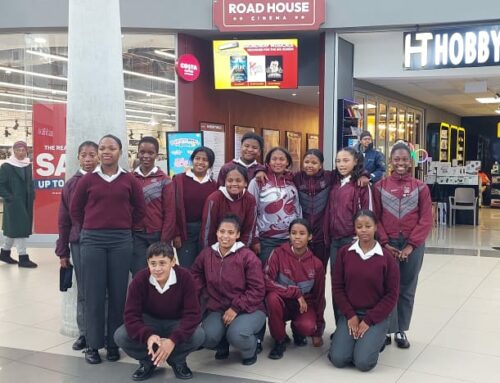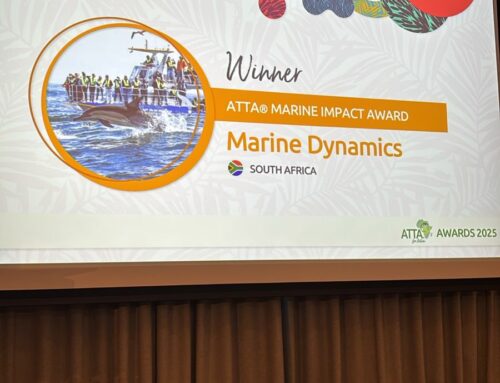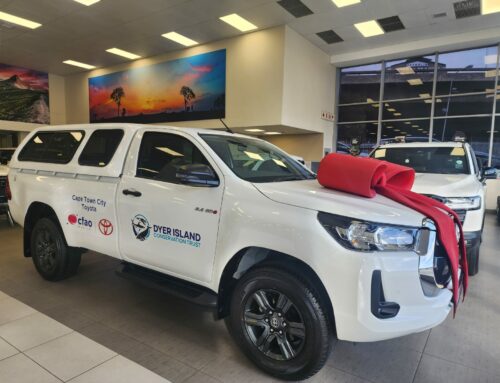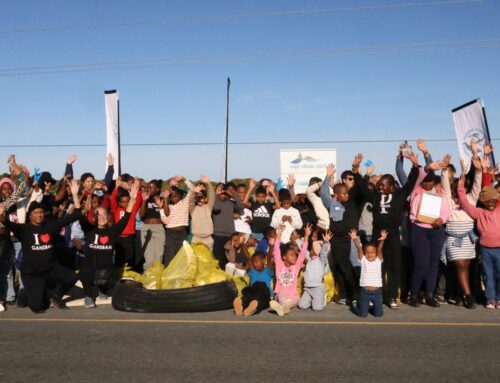© Alison Towner, Dyer Island Conservation Trust/Marine Dynamics
After hearing the news of a 5m female white shark at Marine Dynamics shark cage diving vessel in the Kleinbaai area, I grabbed the tagging kit and we set out to sea to take over the anchor position on the Dyer Island Conservation Trust’s research boat. While preparing the acoustic tag I looked up at our American and Irish interns on the fly deck, two of who have been around for a month and asked them if they have ever seen a white shark. They all answered nervously “No, this is going to be the first time”.
After a few minutes, an immense shape appeared from the depths as she made her way up to the surface in the murky green water – the colour a result of the recently breached estuary. She was magnificent. Her girth was more like that of a whale than a fish- she literally measured over half the length of the boat we were on. As she glided by in a calm and collected demeanor, I could not help but marvel at where she has come from and what she had endured in her long life. I glanced back up at the interns, all with their jaws notably dropped.
Along her head were large strips of copepods- small parasitic crustaceans that look almost like tribal battle stripes and one runs parallel to her eye. Over the years, I have noticed the larger sharks often have more of these, perhaps representing more time at depth or in cooler water as these temperate water little critters tend to drop off in warmer currents. Her right pectoral fin is bent upwards- reminding me of an animal we have logged in the past.
After her second slow circle of the boat, I guide her in slowly with the bait line, and as she glides within range of the tagging pole- almost in slow motion the acoustic tag is placed perfectly at the base of her dorsal fin by Francois Swart using a pole spear and small needle head. She turns her powerful body and dives down, right next to the bow of the vessel. We place the hydrophone into the water to confirm the tag is pinging…it is!
The name ‘Success’ was given to the largest female white shark tagged in South Africa in the De Hoop Marine Protected Area, just further down the coast, back in 2012. No white shark of this size and demographic has been tagged since along the South African coastline-until now. This female, which Alina matched in our database was previously seen in Gansbaai in 2018 June/July. The pectoral deformity and dorsal fin were used to identify her- my premonition was correct! But she had grown significantly and at 5 meters she ‘should’ be around breeding size and certainly the biggest white shark tagged in Gansbaai on record.
The little we do know of females at this size is that they spend extended time periods offshore, in fact, predominantly they remain away from coasts and they can spend hours at depth, as deep as 1000m. They also segregate away from males who generally remain more coastal. Their offshore and diving behaviour may be for two reasons, food- concentrated at deep scattering zones such as squid and the cetaceans feeding on them. Or, to facilitate the breeding process which we believe may take place in offshore warmer waters, with pups being dropped closer to the coast in summer.
With all the focus on where SAs white sharks are, often this size class of animal is left out of the discussion. The fact is, these huge sharks are big for a reason, they are smart and have done a great job at avoiding danger at the surface and near the coasts to attain their size. To properly track them offshore satellite tags are needed, and unfortunately the acoustic tags are limited to coastal shallow seas. So, a lot of what they do remains a mystery and open to anyone’s interpretation. A female shark of this size is identified as a potential breeder in South African waters.
As a 6 month first time pregnant female myself, I couldn’t help but pat my tummy and feel a sense of connection with her, hoping she would go on to help rebuild the population of this vulnerable species. The process of what happens to our bodies is nothing short of a miracle. There is just no comparison to juveniles or male sharks when it comes to what a female shark of this size will feed on and where she will choose to spend her time.
As the sun set beautifully, we left her to go about her business and hopefully rest in the shallows in peace and quiet. Patience had paid off, and as we motored back towards the harbor, we all had big smiles on our faces, knowing not just how special our afternoon had been, but how important the science coming from this will be for this incredible species in South Africa.
(Alison Towner and Dickie Chivell will be featured in Discovery Shark Week 2021)

